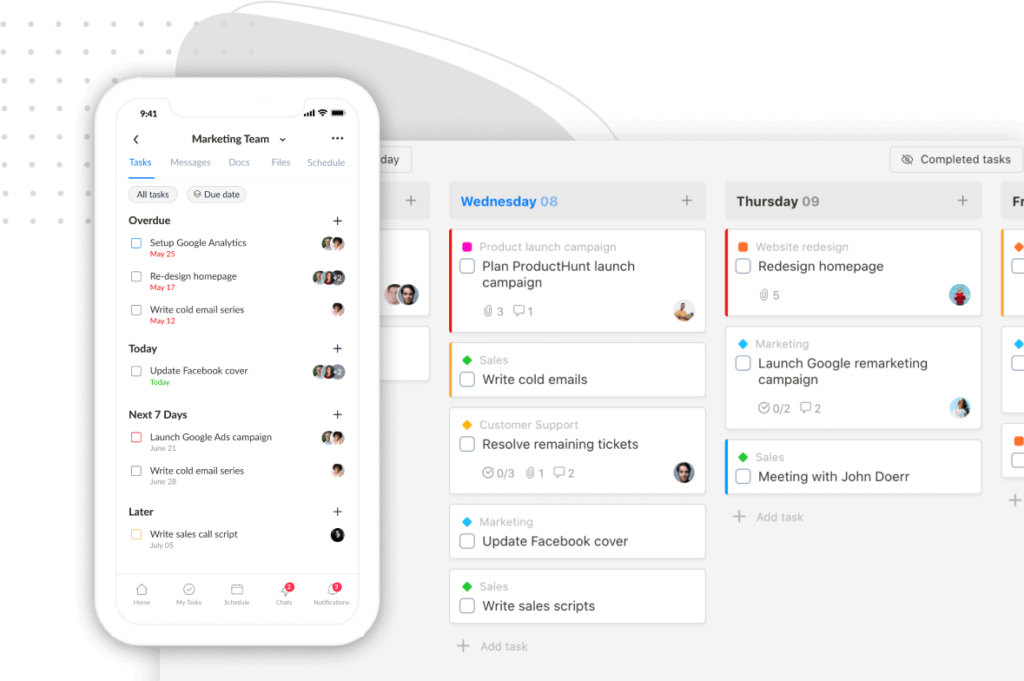Searching for the best Agile collaboration tools but baffled by the variety available?
In this article, we’ve gathered 19 of the top options on the market, each with its unique features.
Read on to find the right ones for your team.
I. Agile collaboration tools | Overview
Before delving into reviews of Agile collaboration tools, it’s crucial to understand the distinctions between Agile collaboration tools, Agile tools, and collaboration tools.
Here’s a quick comparison:
|
Feature |
Agile Collaboration Tools |
Agile Tools |
Collaboration Tools |
|---|---|---|---|
|
Purpose |
Agile team collaboration |
Agile software development |
General-purpose team collaboration |
|
Features: | |||
|
+Real-time collaboration |
✅ | ||
|
+Kanban boards |
✅ |
✅ | |
|
+Visual dashboards |
✅ |
✅ | |
|
+Sprint planning |
✅ |
✅ | |
|
+Backlog management |
✅ |
✅ | |
|
+Burndown charts |
✅ |
✅ | |
|
+Communication |
✅ |
✅ |
✅ |
|
+File sharing |
✅ |
✅ |
✅ |
|
+Task management |
✅ |
✅ | |
|
Users |
Agile teams of all kinds |
Agile software development teams |
Teams of all kinds |
Agile collaboration tools are further categorized into four common types based on their purpose:
- Project Management Tools: For breaking down projects into manageable tasks, deadlines, and resources.
- Communication and Collaboration Tools: Enable real-time chat, call, and collaboration among team members.
- Documentation and Knowledge Management Tools: Assist in storing, sharing, and managing project documentation and knowledge.
- User Story and Product Backlog Management Tools: Allow Agile teams to organize, prioritize, and manage user stories and product backlogs.
In addition to these general categories, there are specialized Agile collaboration tools designed for specific use cases, such as marketing, sales, and development.
The right tools for your Agile team depend on 5 factors:
- Project goals
- Team size
- Team’s Agile adoption level
- Workflow
- Budget
(Many teams find it beneficial to use a combination of tools from different categories to meet their diverse needs.)
Now that you may have a better idea of the types of Agile collaboration tools you need, let’s take a look at the following list.
II. 19 Best Agile Collaboration Tools to Skyrocket Team Capacity
Agile Project Management Tools:
1. Asana
Availability: Web, Windows, macOS, iOS, Android
Asana, as an Agile project management tool, is a breeze for teams to organize projects and track tasks.
It offers features that align well with Agile principles. For example, Kanban boards, Gantt charts, custom fields, task dependencies, etc.
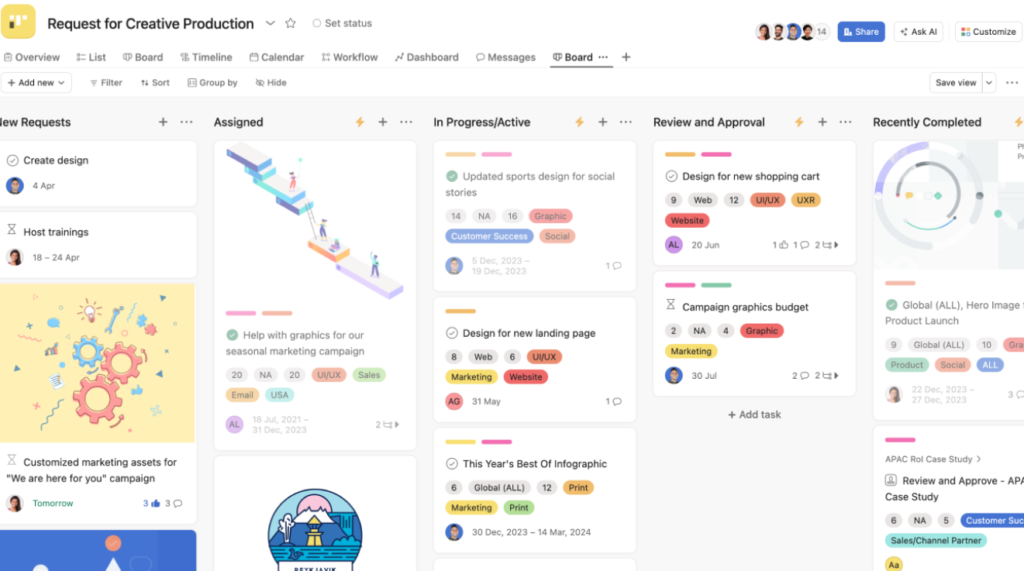
Read Full Review: Asana Review.
With robust task management capabilities, Asana lets you effortlessly organize, track, and delegate tasks to individual team members.
The app also offers dashboards, helping project managers to track Agile metrics that are the most important to them.
Limitations:
- Unable to assign multiple people to a single task -> limited team management capability.
- Lack of built-in time tracking features.
Key Features
- Kanban boards and Gantt charts
- Custom fields and task dependencies
- Inbox and Message
- Task descriptions, assignees, collaborators, file attachments, and comments.
- Automation
Pricing
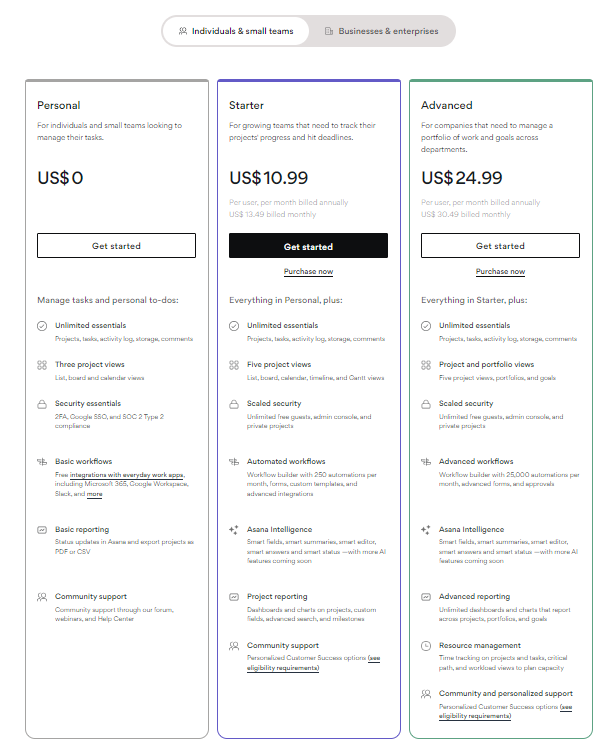
2. Upbase
Availability: Web, Android, iOS.
Upbase stands out among Agile project management tools, offering a unique blend of simplicity and power that sets it apart.
Unlike other tools that complicate things with excessive features, Upbase keeps it simple and focused on what really matters without sacrificing a wide range of features.
Imagine having all your project needs in one place – tasks, files, documents, links, plans, schedules, discussions, and even chats – without the hassle of switching between different tools.
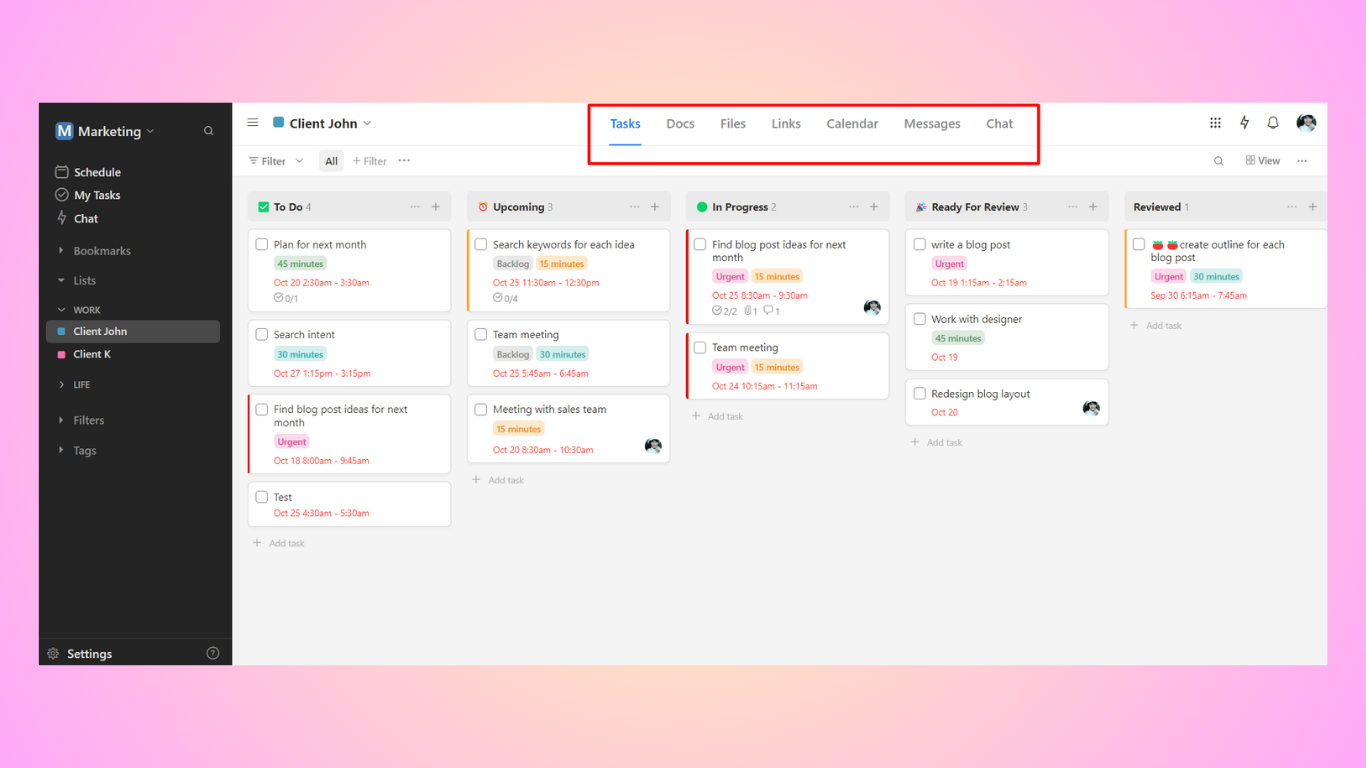
Plus, the user-friendly interface ensures that even those less tech-savvy can dive in effortlessly.
That’s Upbase for you, an all-in-one solution designed to make your Agile team work seamlessly and effectively.
Here’s how Upbase makes Agile project management a breeze:
1. Easy Task Tracking and Workflow:
At the heart of Upbase lies a robust task management system with visual Kanban boards, priority lists, deadlines, and drag-and-drop functionality.
Personalize your experience with custom filters, a multiple-tags filtering system, and sorting options.
2. Effortless Documentation and Knowledge Management:
Upbase’s Docs module is where your team’s creativity meets productivity.
Real-time collaborative editing on project documents means no more version control nightmares.
Add watchers, tag collaborators in the comment box, and witness your documents evolving seamlessly.
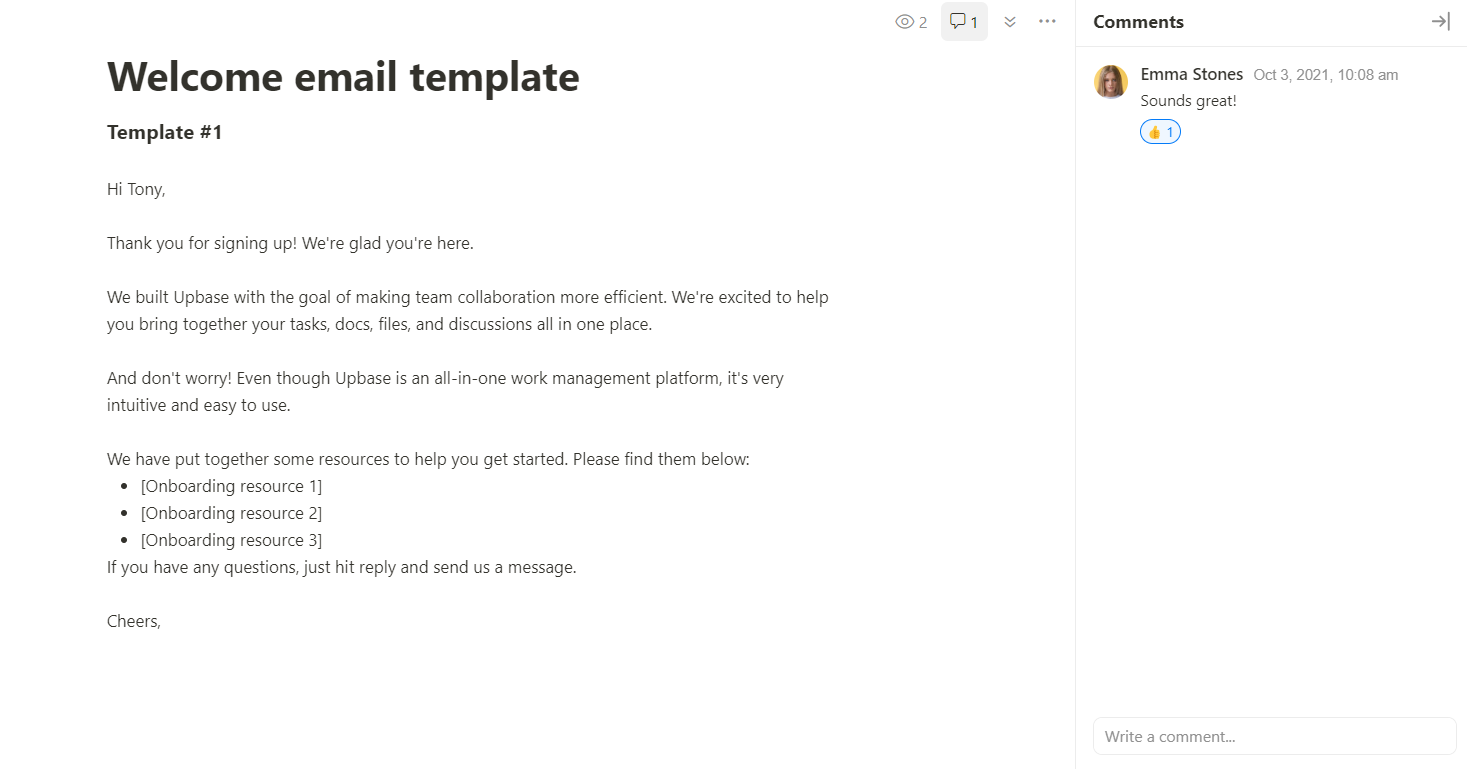
3. Organized File Storage:
Your project-related files deserve a VIP lounge, and that’s precisely what Upbase’s Files module provides.
Share public links, manage file versions, and tag someone in the comment box of each file.
4. Smart Link Management and Collaboration:
Save your project-related URLs in the Links module. But unlike the regular bookmark tools, it lets you add descriptions, tag watchers, and leave comments on each link.
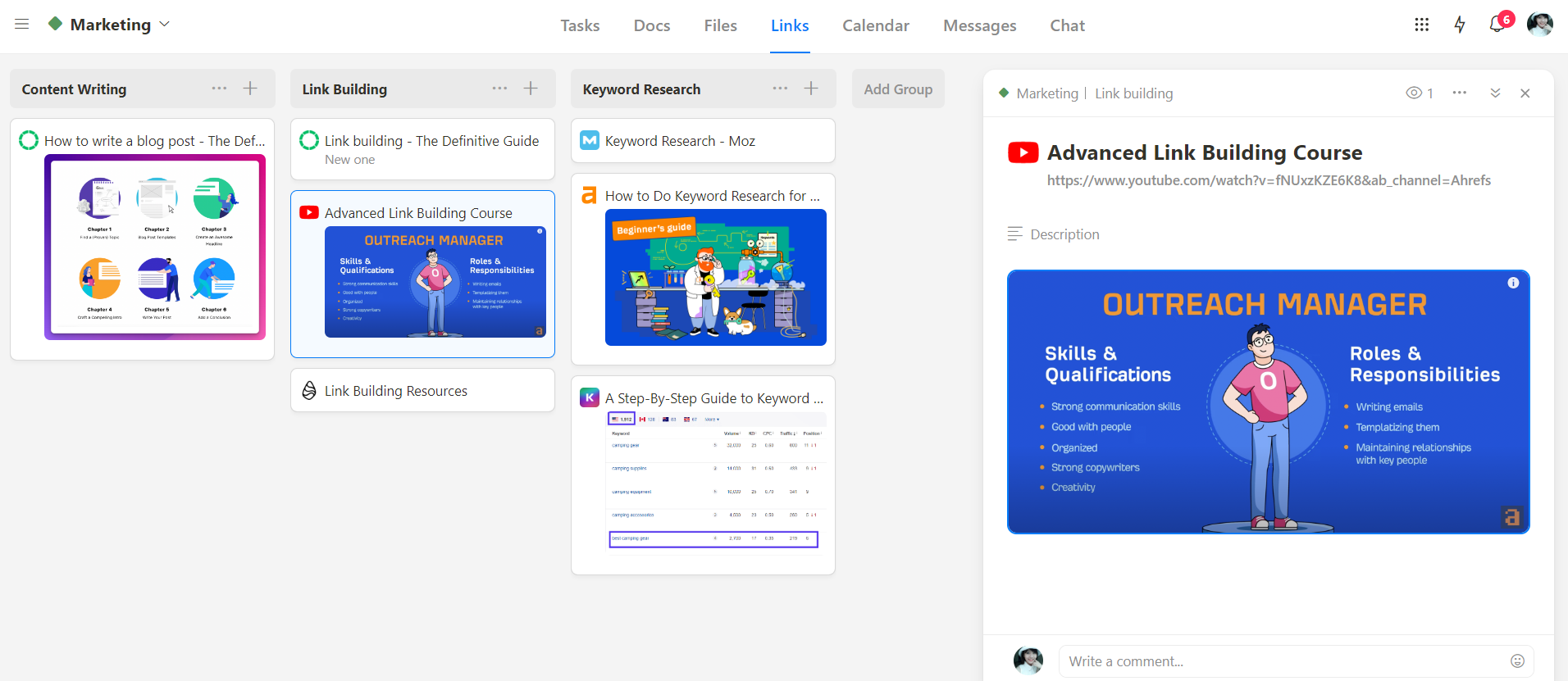
5. Collaborative Brainstorming:
Need a space for team discussions, brainstorming, or announcements? Enter the Messages module.
Say goodbye to lengthy emails; embrace organized and efficient team communication. It’s not just messaging; it’s collaborative brainstorming at its finest.
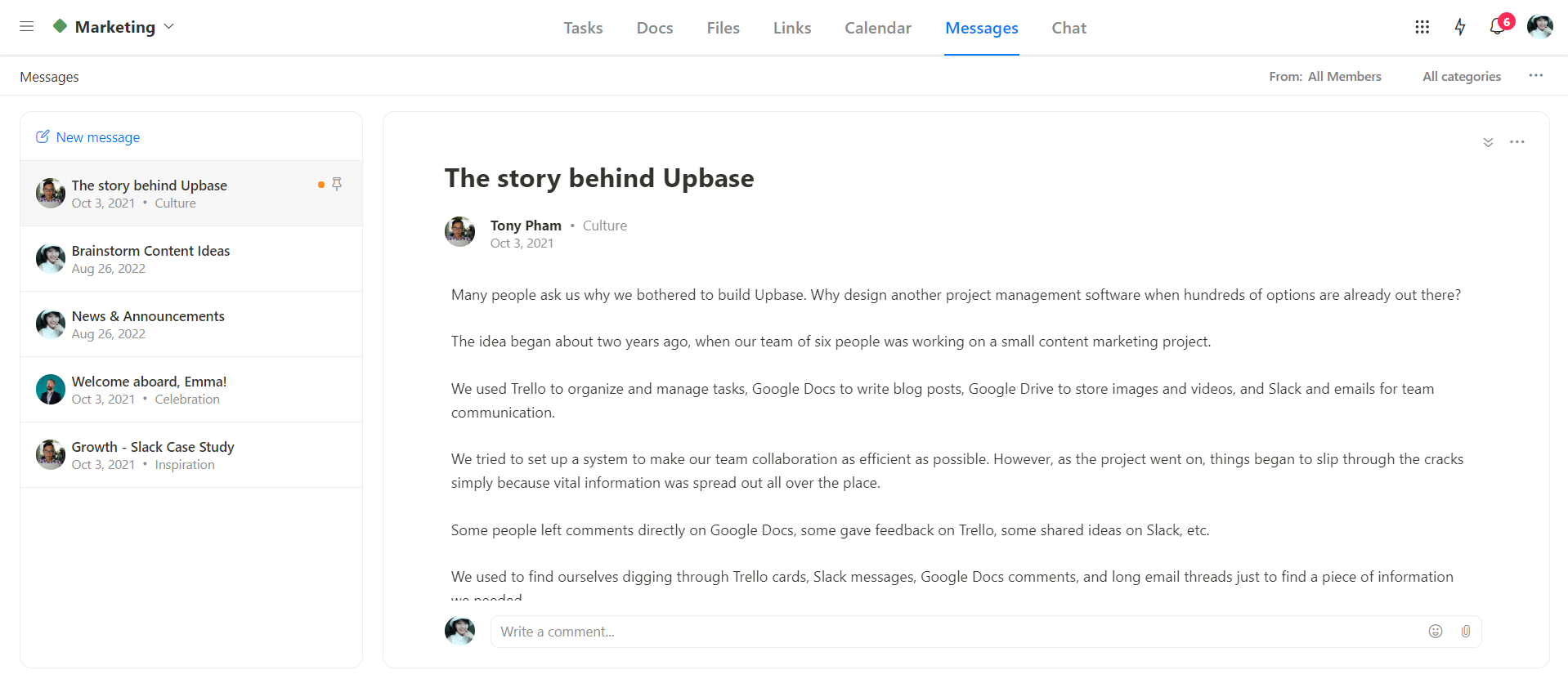
6. Transparent Communication:
The chat tool serves as your team’s communication hub. Silos crumble as real-time communication fosters transparency. No more waiting for emails; your team is always on the same page.
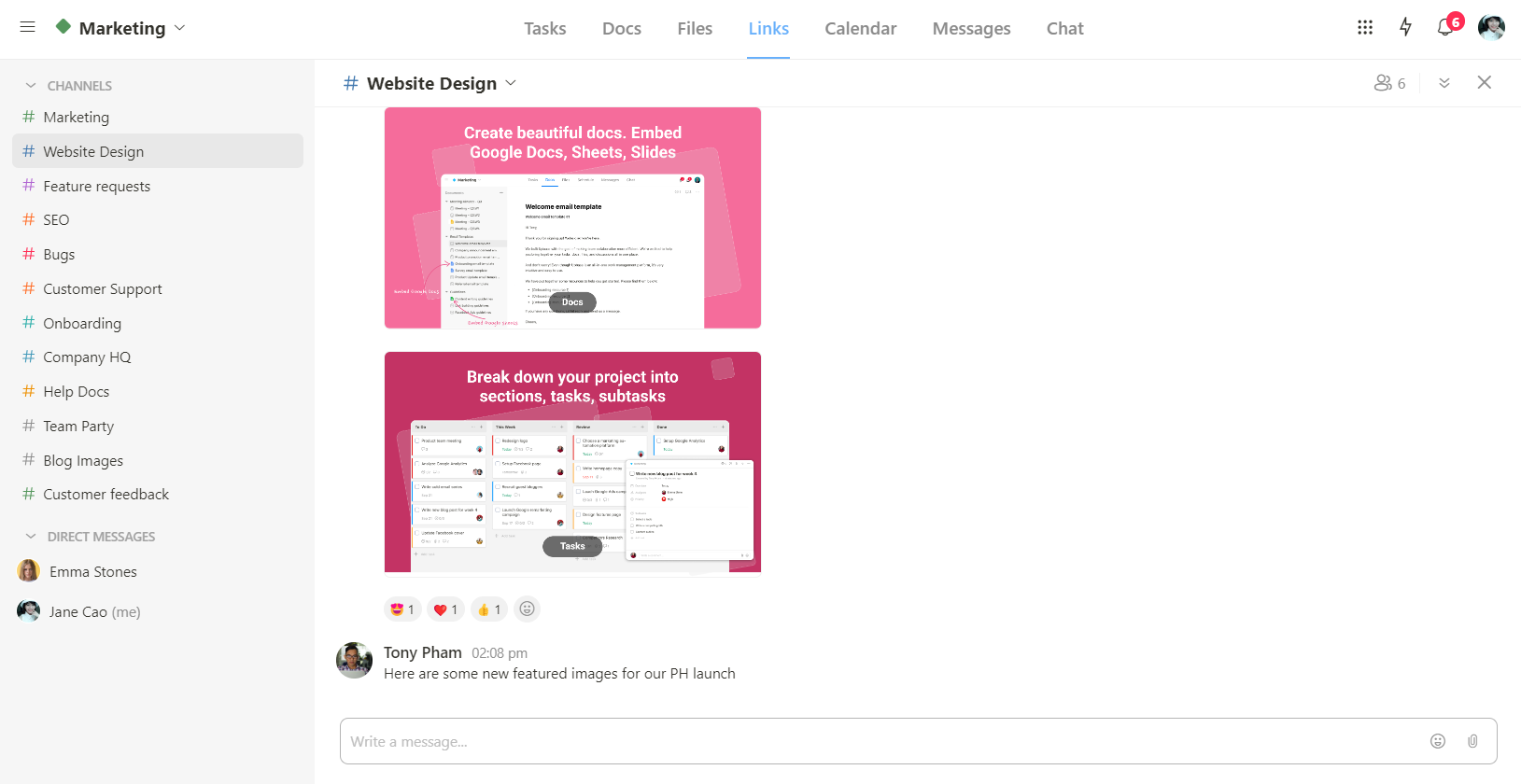
7. Seamless Connections with Existing Tools:
Upbase seamlessly integrates with Google Calendar and allows embedding Google Docs, Sheets, Slides, and Drive folders.
This way, your team can manage external project data without switching between tabs, enhancing seamless workflow.
Pricing
Unlike others that offer short free trials or basic free plans, Upbase is a different story.
Enjoy a generous free-forever plan with unlimited users, tasks, and storage. Upgrade only when you’re ready. The low-cost Premium plan offers unlimited everything, providing exceptional value.
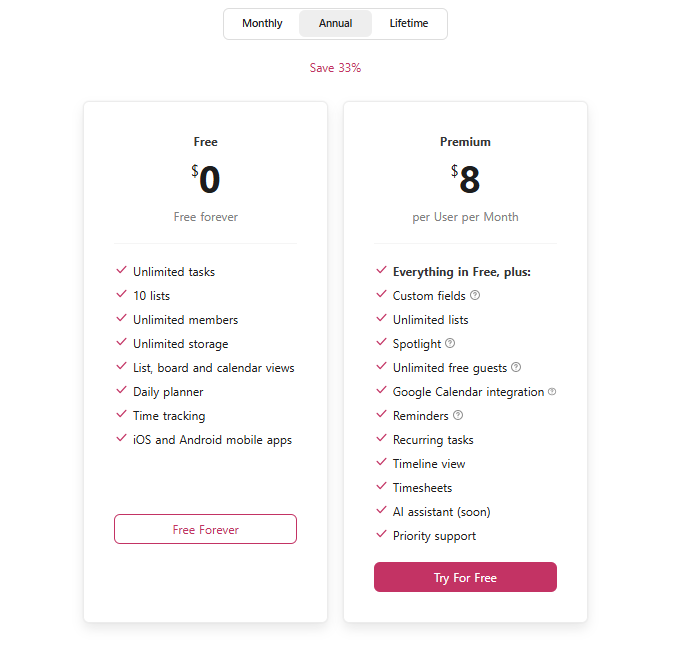
So why not sign up for a free Upbase account today and see it improves your team performance.
3. Jira
Availability: Windows, Mac, Linux, Android, iOS, web.
Jira is known as a powerful Agile project management tool specifically designed for software development teams.
Unlike many project management tools, the Agile methodology it’s focused on is Scrum boards.
These boards allow for the creation of sprints, backlogs, and progress tracking, which are essential for Agile project management.
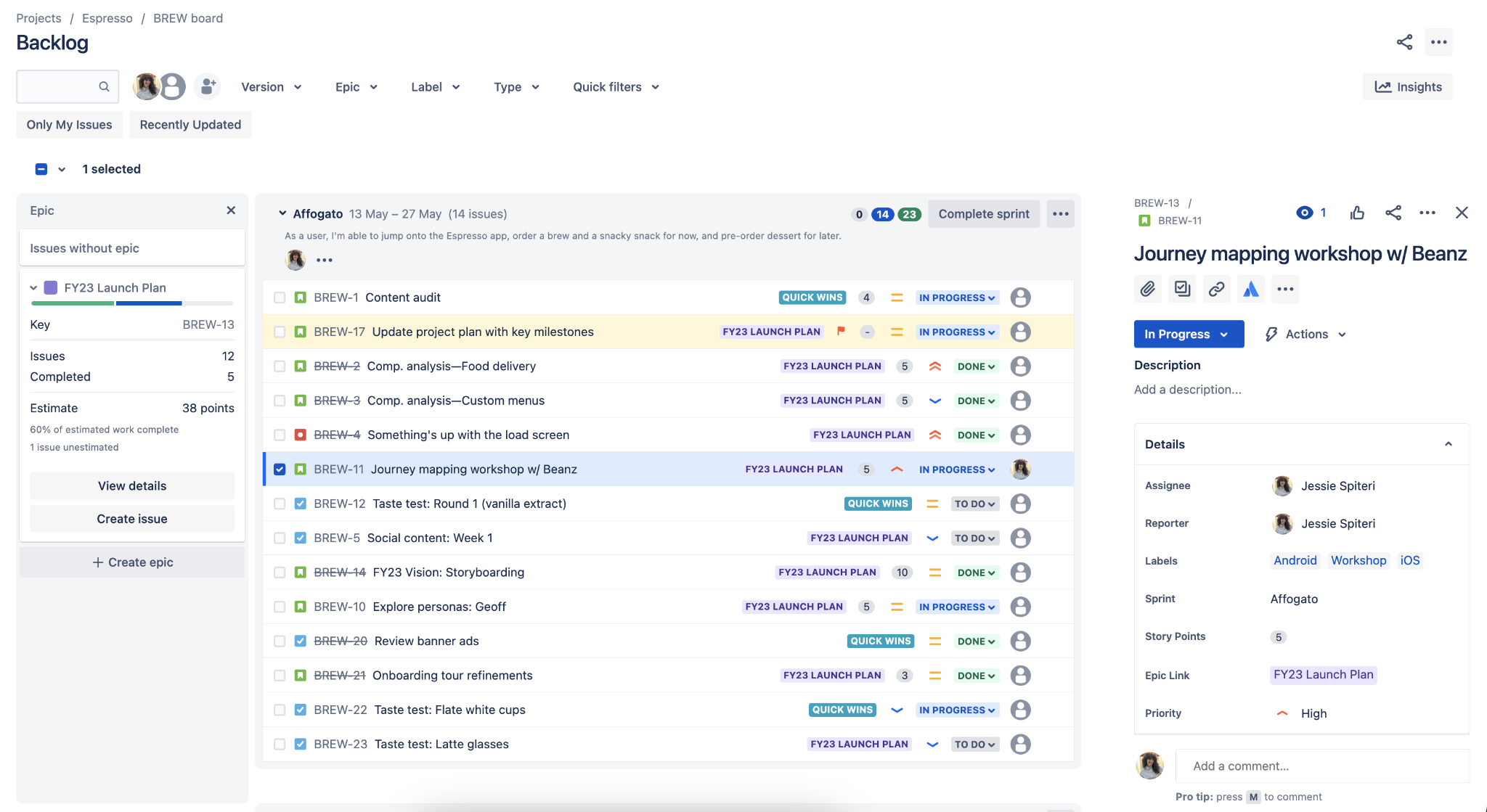
Not only that, but Jira also offers advanced reporting features and portfolio management capabilities, making it an ideal enterprise solution.
Limitations:
- Steep learning curve for those unfamiliar with complex project management tools.
- Can become overly complex for smaller teams.
Key Features
- Scrum boards
- Highly customizable workflows
- Burndown charts and cumulative flow diagrams
- Detailed analytics
- Task templates
Pricing
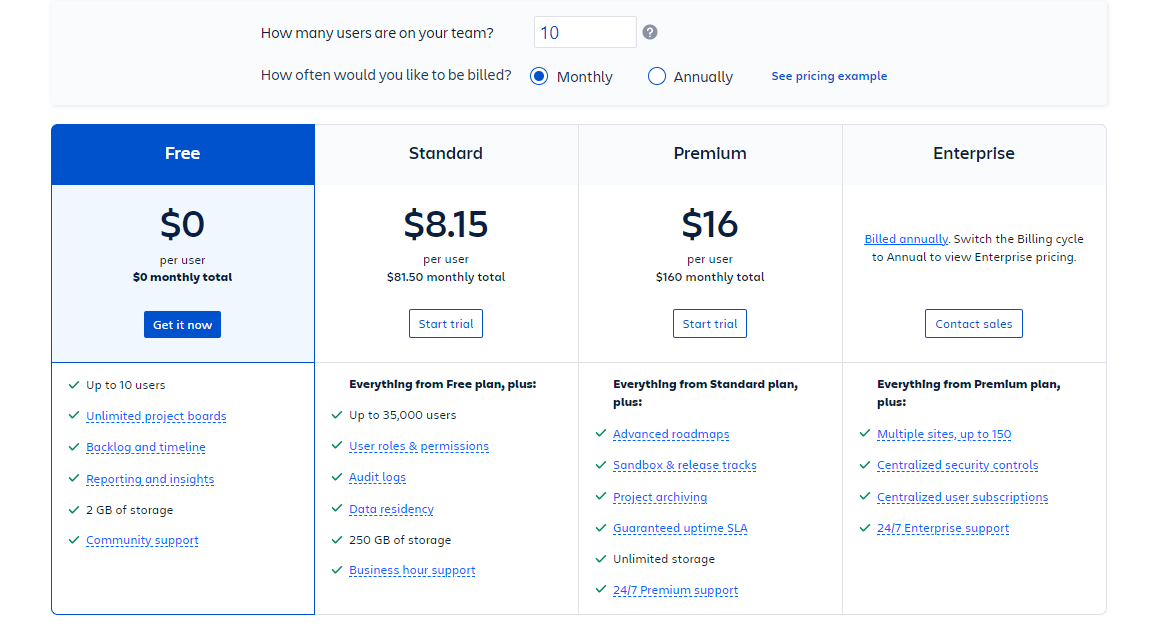
4. Planbox
Availability: web, Android, iOS
With its notable emphasis on innovation management, Planbox is particularly suitable for those project managers with innovation management needs.
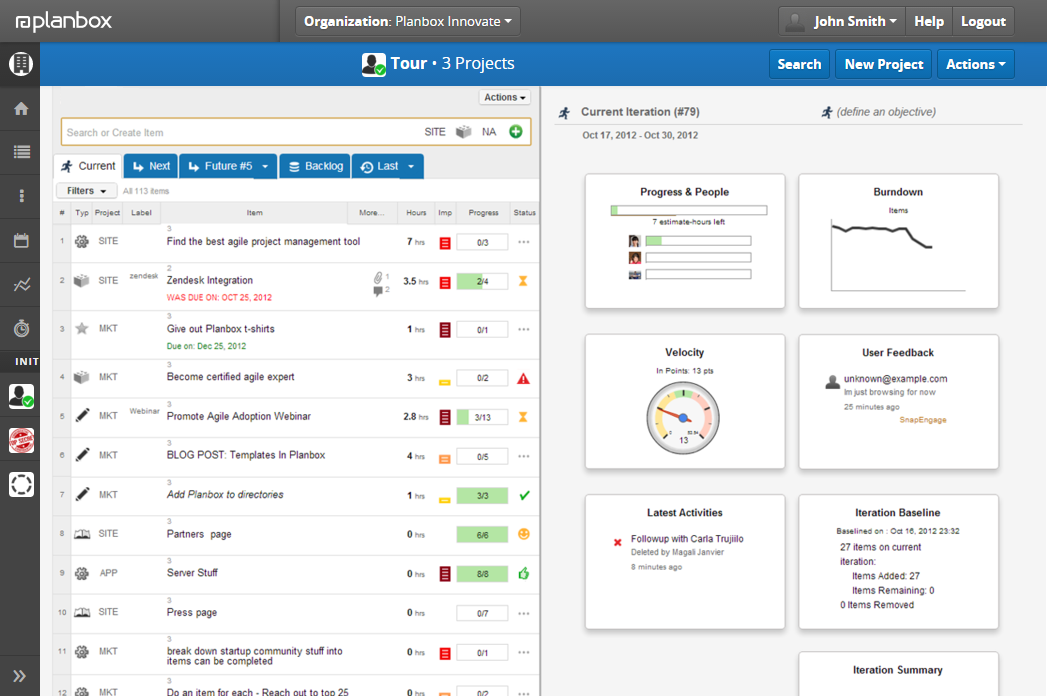
The Agile project management tool allows team members to quickly capture ideas, and manage or submit them for collaboration.
It also offers a systematic evaluation process to determine which ideas to pursue.
Limitations:
- High learning curve for new users
- Clunky user experience
- Basic task management features
Key Features
- Scrum and Kanban
- Document sharing
- Idea capturing and management
- Custom fields and forms
- Roadmaps
Pricing
The Agile project management tool offers two pricing options: cloud or on-premise deployment. The starting price is $6/user/month for up to 250 users.
Communication and Chat Tools:
1. Slack
Availability: web, iOS, Android, Windows, macOS, Linux
Slack is widely recognized as an effective Agile tool for real-time communication.
It enables Agile teams to send direct messages or create group chats in channels, where everyone can communicate through text, share files, create threads, or mention someone.
Additionally, users can conduct video meetings and conferences without leaving the platform.
In summary, with its robust communication and seamless collaboration capabilities, Slack proves suitable for both Agile teams and remote teams.
Limitations:
- Cost considerations
- Potential for information overload
Key Features
- Channels and direct messages
- Threads and @mention
- File-sharing
- Customizable notifications
- Huddle
Pricing
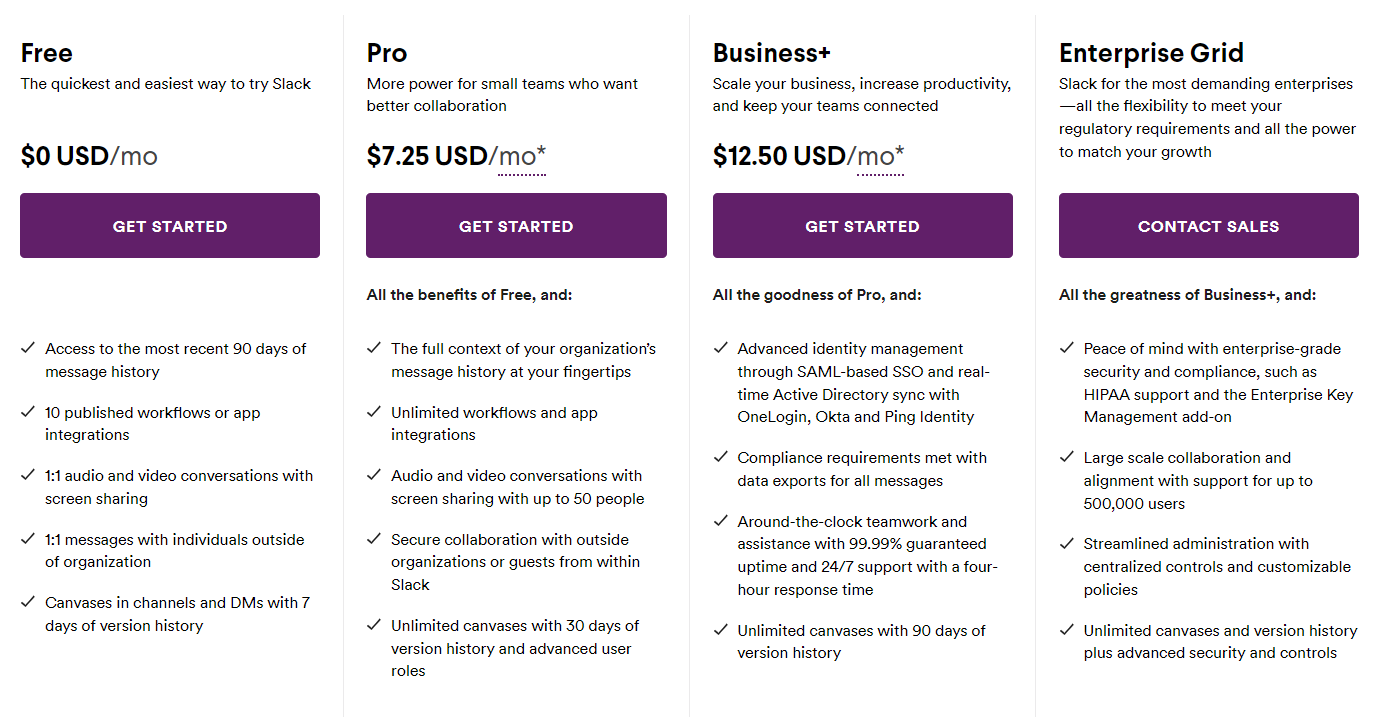
2. Microsoft Teams
Availability: Windows, macOS, iOS, Android
Similar to Slack, Microsoft Teams follows a channel-based communication model and provides built-in audio and video conferencing capabilities.
The key distinction lies in its seamless integration with the Microsoft 365 suite.
Agile teams extensively utilizing the suite can easily incorporate the apps they require. For instance, team members can collaboratively author documents in real-time using Office Online.
This unique feature sets Teams apart from other communication tools.
Limitations:
- High learning curve
- Become clunky for simple Agile project management needs
Key Features
- Channels and direct messaging
- Audio and video conferencing
- Document collaboration
- Integration with Microsoft 365 suite
Pricing
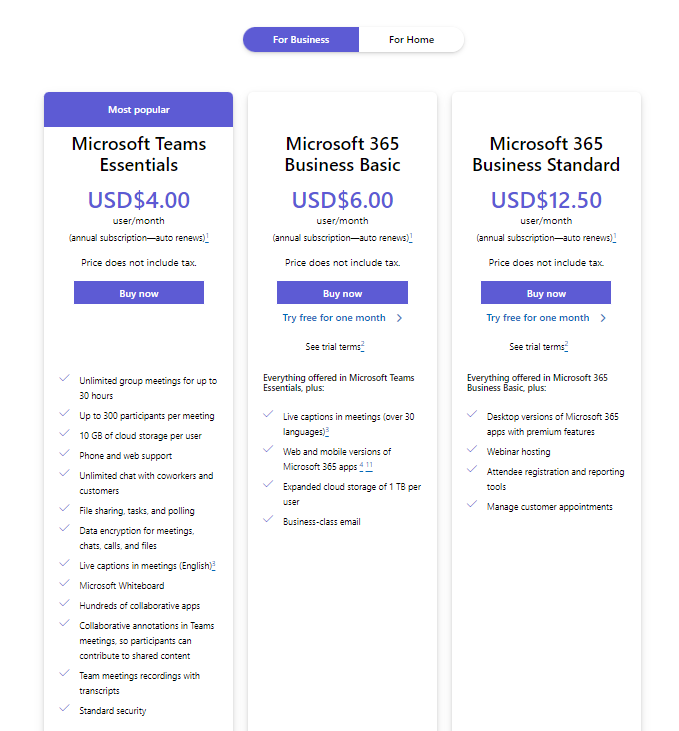
3. Zoom
Availability: Mac, PC, Android, Chrome, and Firefox.
Zoom is a popular video conferencing tool that facilitates high-quality video meetings and accessible audio calls via phone. Such flexibility is beneficial for remote teams or individuals who prefer audio-only participation.
But what truly makes Zoom stand out from many similar Agile tools is its support for screen sharing, real-time messaging, and meeting recording.
All-in-all, if your remote team primarily relies on virtual meetings rather than persistent chat, Zoom is a reliable Agile tool for you.
Limitations:
- Limited customization options
- Not provide as comprehensive collaboration features as other similar Agile tools
Key Features
- High-quality video calls
- Phone-accessible audio calls
- File-sharing and chatting during meetings
- Meeting recording
Pricing
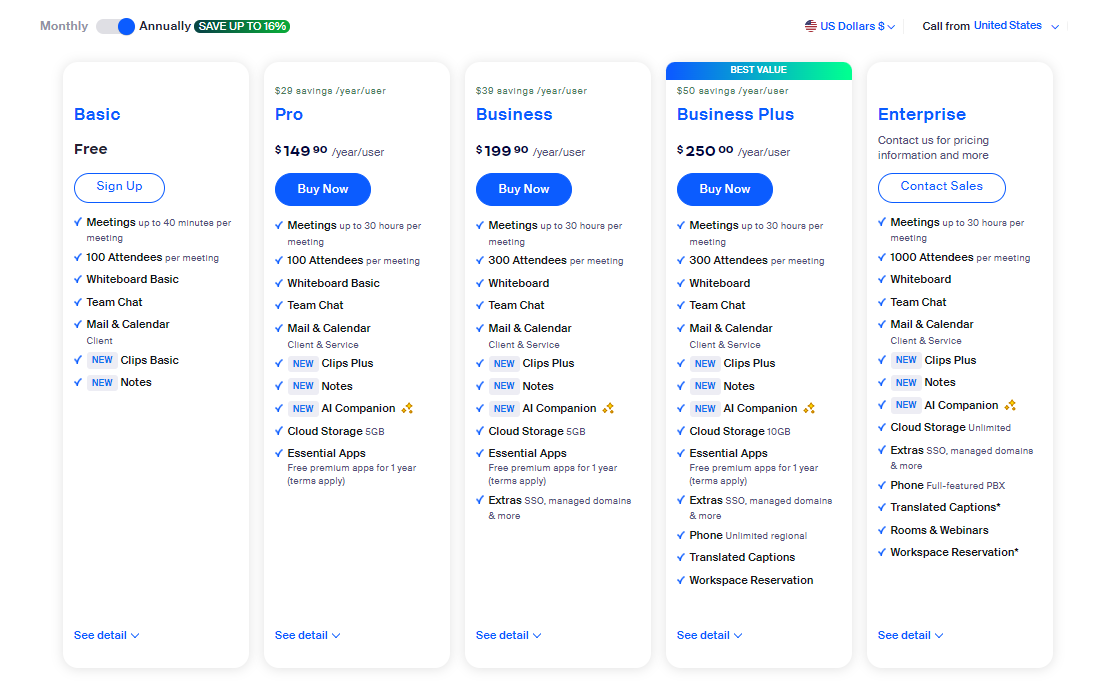
4. Google Meet
Availability: web and mobile apps (Android and iOS)
Google Meet stands out from other communication tools for two reasons: 1) great scalability and 2) simplicity.
It’s suitable for both small team meetings and larger virtual events without complex setup requirements.
While Meet primarily focuses on video conferencing, its native integration with Google Workspace provides users with broader collaboration features.
For example, you can schedule meetings via Google Calendar or share files during a meeting via Drive.
Meet vs. Teams – Quick Comparison: Meet stands out for its simplicity and ease of use, whereas Teams offers more robust built-in chat features.
So, if you’re seeking a user-friendly and scalable video conferencing software option, Google Meet might be a great choice.
Limitations:
- Limited chat capability
- Lack of extensive features for Agile project management, collaboration, and customization
Key Features
- Video calls
- Business email
- Security and management control
- Integration with Google Workspace
Pricing
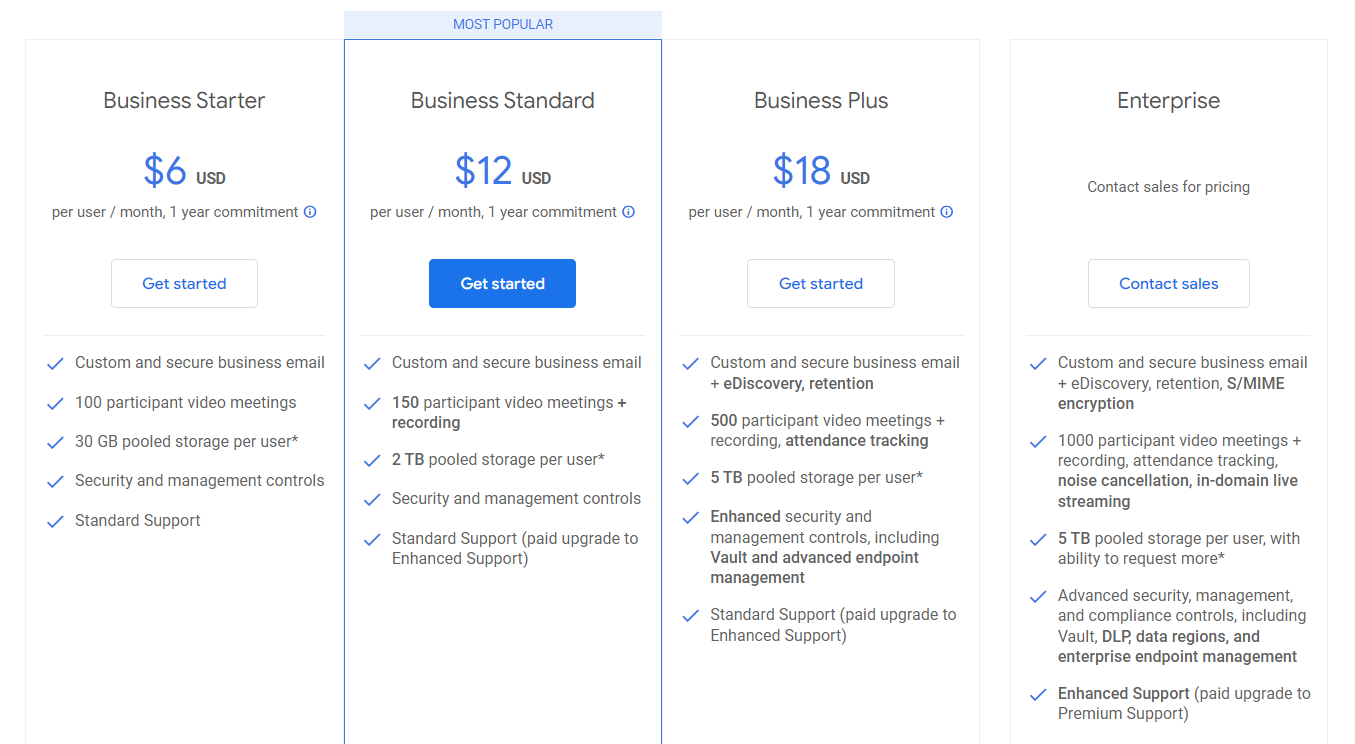
Brainstorming, Document and Knowledge Management Tools:
1. Miro
Availability: web, Android, iOS, macOS, and Windows.
Miro offers a wide range of dedicated features for collaborative ideation among cross-functional teams.
Imagine having a digital canvas, equipped with sticky notes, drawings, and various templates, where your Agile team can visually represent ideas, capture concepts, or create mind maps. That’s the power of Miro!
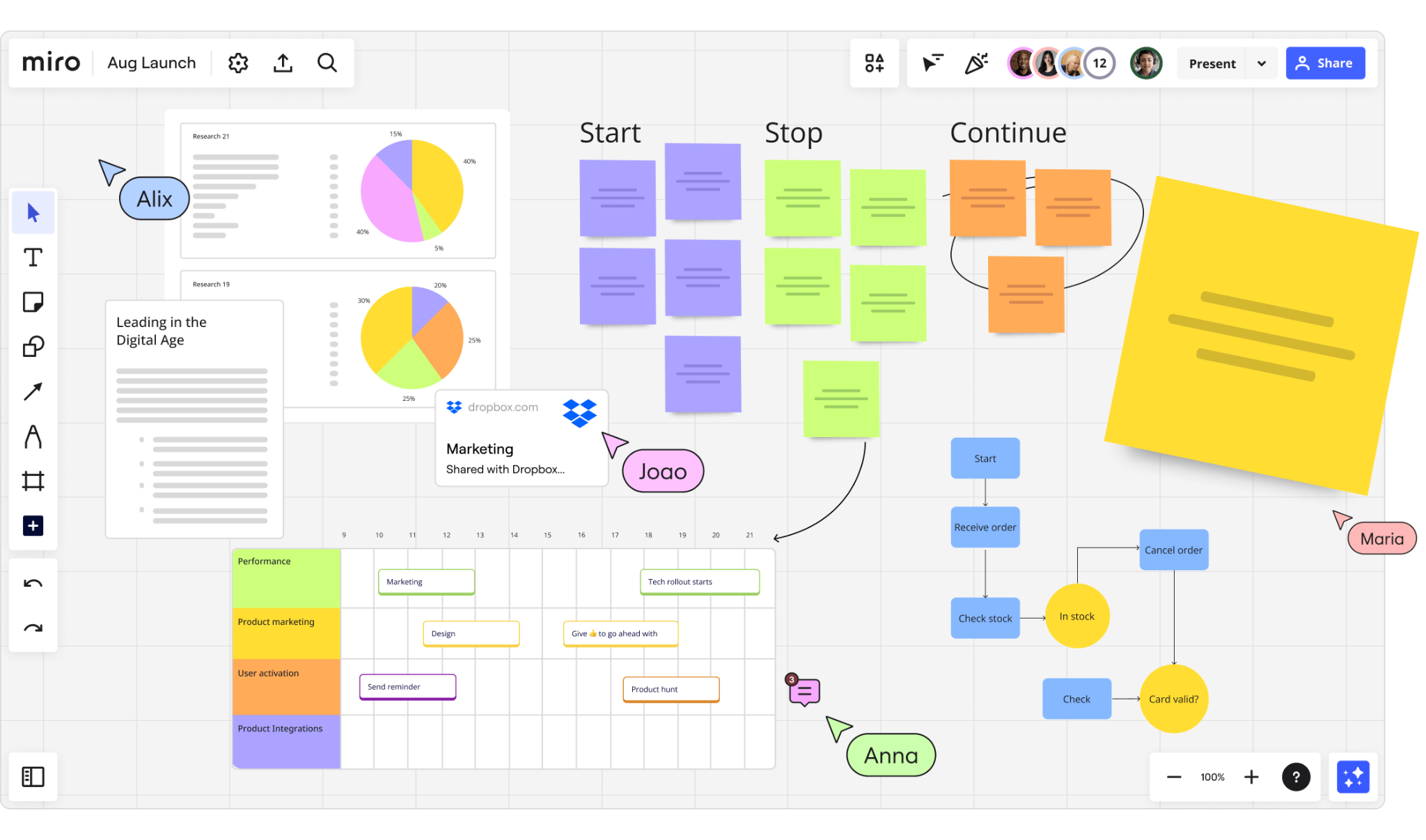
Moreover, this Agile tool supports real-time collaborative editing, allowing multiple team members to work on shared documents simultaneously.
The user-friendly interface makes it easy for team members to participate in brainstorming sessions.
Limitations
- Lack of structured hierarchy for document organization
- Limited content formatting options
- Can be overwhelming for large projects
Key Features
- Editable boards, timelines, and cards
- Sticky notes and drawing tools
- Templates
Pricing
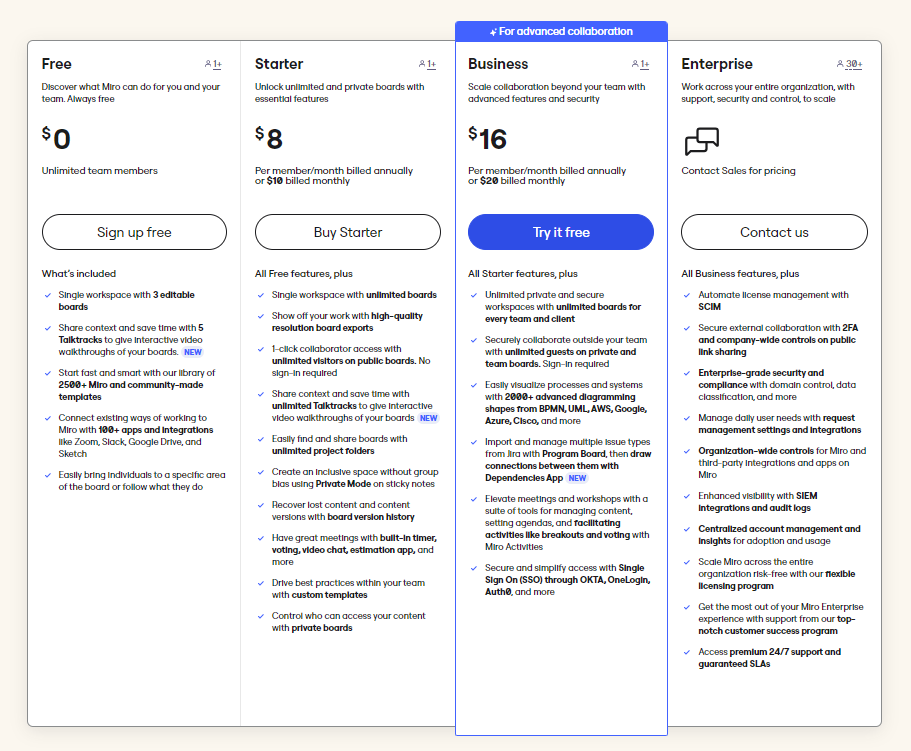
2. Confluence
Availability: Web, Android, iOS
Confluence is not as good for visual brainstorming as Miro.
However, it excels in rich content editing options, deep hierarchy, and detailed permission settings—ideal for documenting and organizing knowledge.
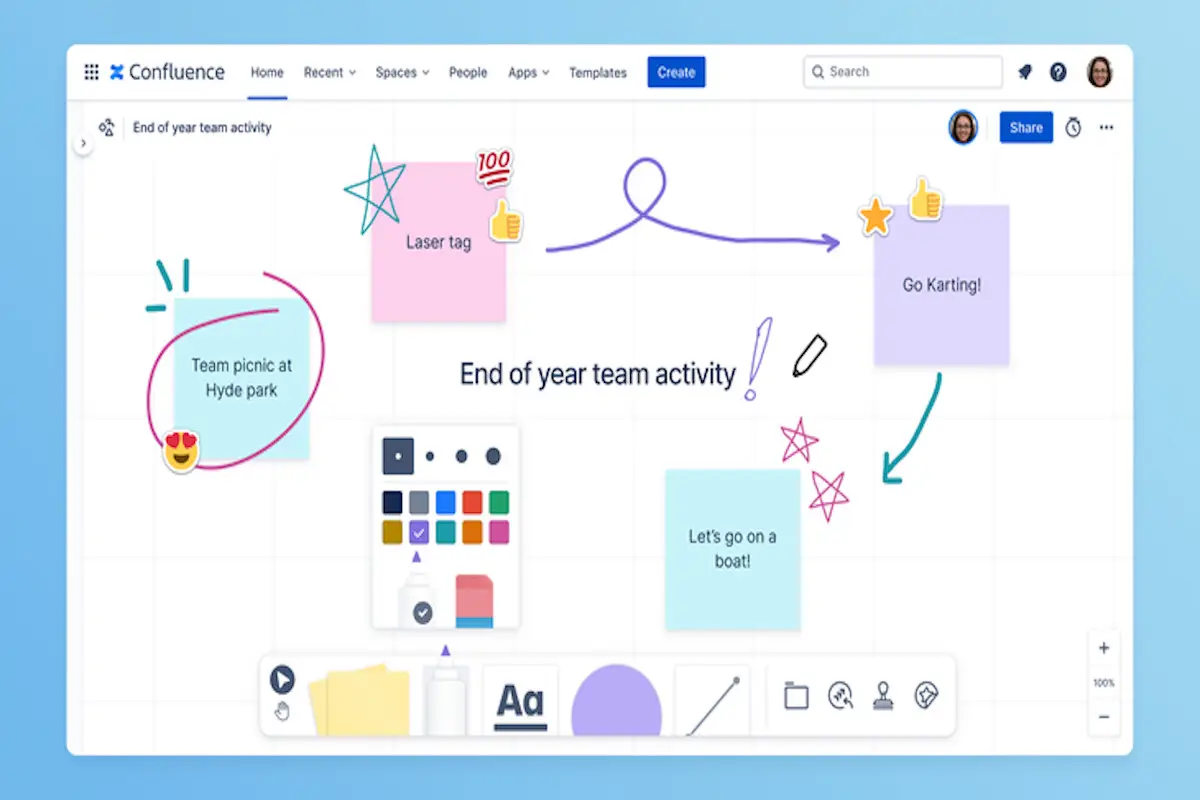
It is noteworthy that Confluence is part of the Atlassian suite and integrates seamlessly with Jira, meaning that it also supports Agile project management.
Limitations
- Complexity for new users
- Not intuitive for brainstorming
- Can be challenging for multiple people to collaboration simultaneously
Key Features
- Spaces and pages
- User permissions
- Analytics
- Integrations with Atlassian ecosystem
Pricing
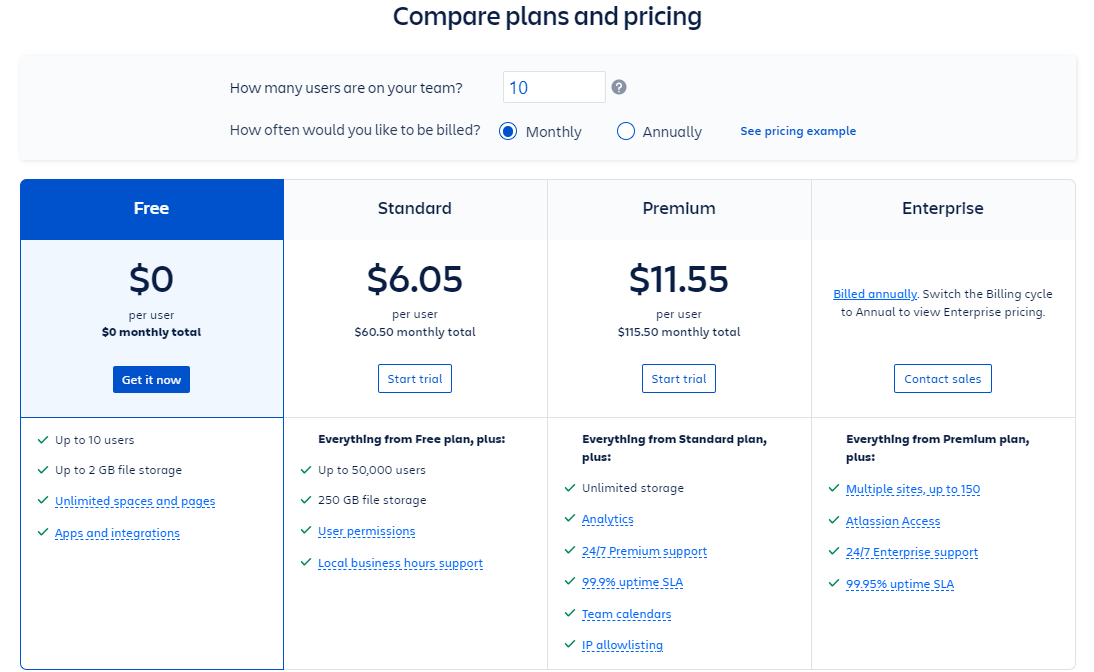
User Story and Product Backlog Management Tools:
1. Pivotal Tracker
Availability: web, Android, iOS
Compared to other Agile tools for user story management, Pivotal Tracker is relatively simple and lightweight.
It provides a basic reporting engine that can track velocity, cycle time, and other lean metrics, while its backlog consists of a simple list of user stories.
The easy-to-use drag-and-drop interface makes it a breeze to move tasks around and track progress.
Limitations
- Very limited free plan
- Lacks advanced features, compared to popular tools
Key Features
- Drag-and-drop interface
- Scrum and Kanban boards
- Velocity tracking
- Stories’ status updating and commenting
Pricing
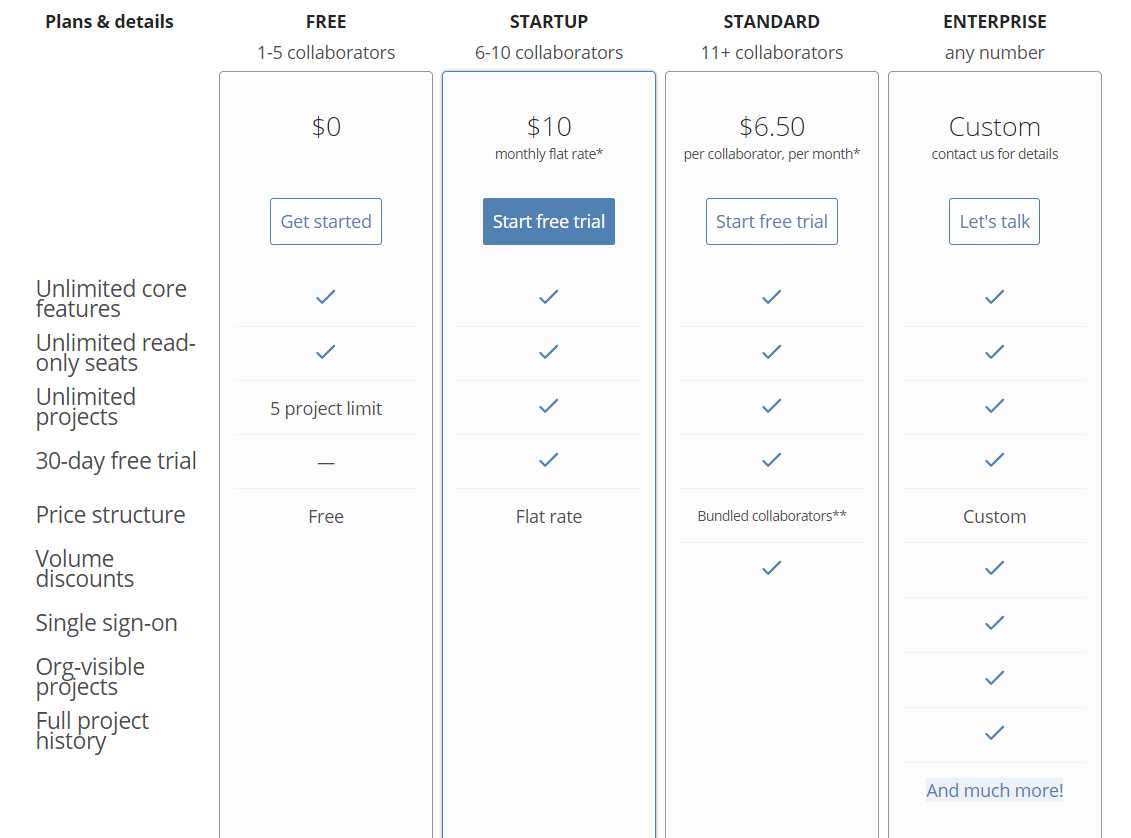
2. Aha!
Availability: Web, Android, iOS
Aha! offers more comprehensive features than Pivotal Tracker.
This Agile tool has a more sophisticated backlog that allows you to group user stories into initiatives and epics. You can also prioritize the backlog using a variety of criteria, such as effort, value, and risk.
Moreover, Aha! has a powerful reporting engine that can help you track the progress of each team member and identify areas for improvement.
Limitations
- Sky-high pricing
- Can be complex and overwhelming for some users
Key Features
- Detailed idea descriptions
- Roadmaps and timelines
- Reports and analytics
- User permissions
Pricing
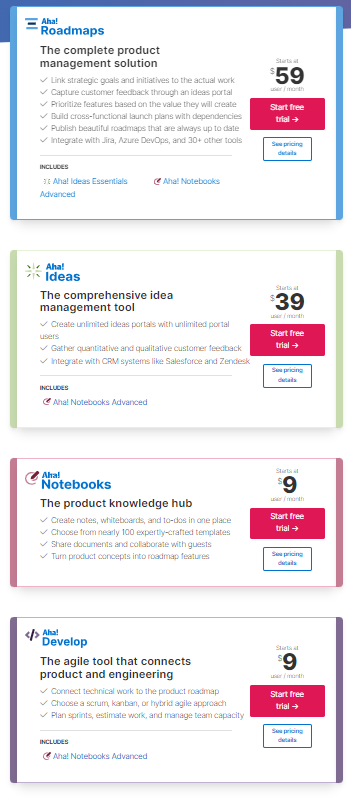
3. Productboard
Availability: Web, Android, iOS
Productboard is one of the popular tools for product backlog management, with a focus on helping Agile teams prioritize features and make data-driven decisions.
Its backlog works a bit like Aha!’s – you can group user stories into initiatives and epics and prioritize them in different ways.
Plus, it has a reporting feature to collect customer feedback, analyze data, and create roadmaps.
Limitations
- Expensive
- Not strong for user story management
Key Features
- Effort-value mapping
- Kano analysis
- MoSCoW prioritization
Pricing
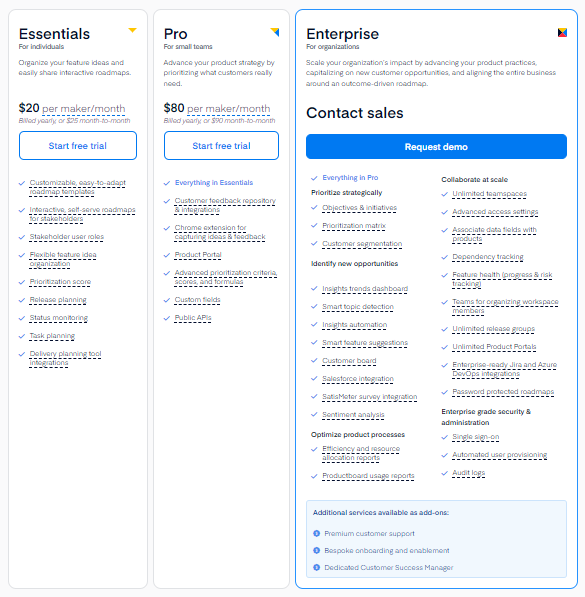
Other Agile Collaboration Tools to Have:
A. For Agile Development Teams
1. GitHub
GitHub is a powerful, flexible, and easy to use option, known for its clean interface and extensive features.
It offers code review, issue tracking, project management, and wiki, along with commenting, @mentions, and activity streams for fostering collaboration within the entire team.
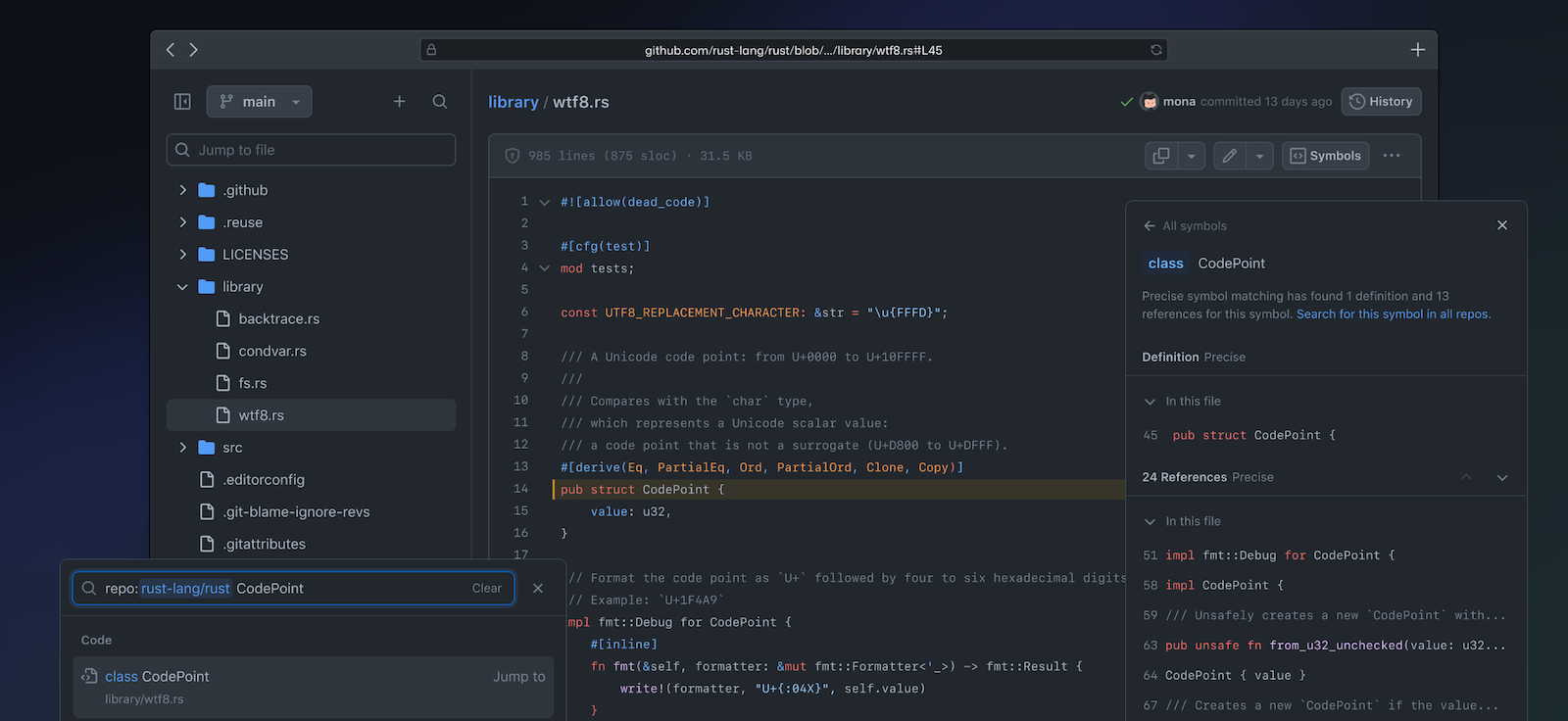
Limitations:
- Too limited free plan, compared to other tools.
- Lack of CI/CD features.
2. GitLab
Like GitHub, GitLab is designed for teams of all sizes and offers extensive features to control versions, manage multiple projects, and streamline collaboration.
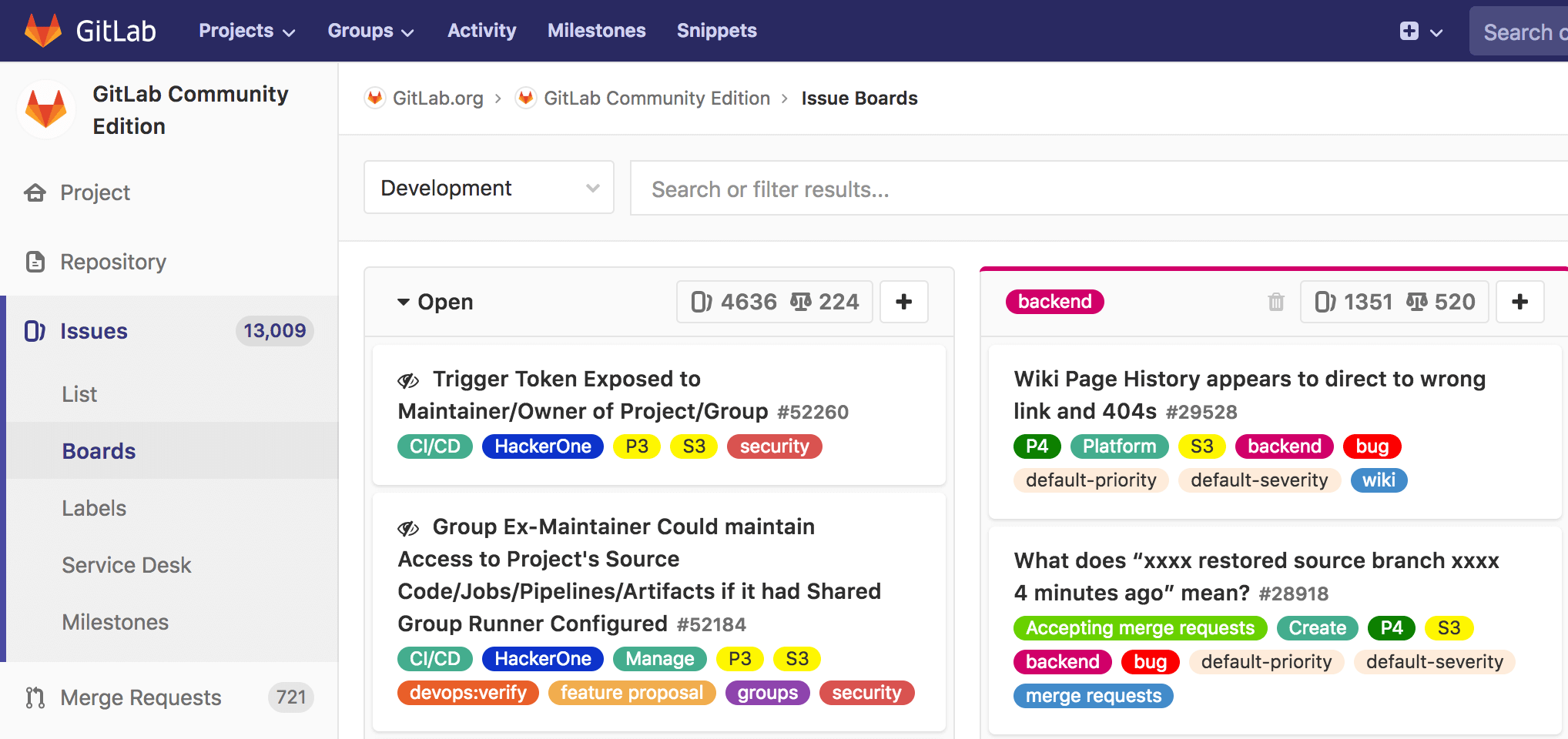
However, GitLab is a bit more flexible, offering two service options: self-hosted or cloud-based.
It also stands out for providing powerful CI/CD features, a built-in Kanban board, and an open-source codebase.
Limitations
- High pricing
- Limited storage for free plans
3. Bitbucket
Bitbucket has a strong focus on code review. It highlights syntax and code blocks, making it easy for reviewers to understand, check, and provide feedback on the code. Teams can also define custom code review rules, enforcing specific standards and best practices.
Other features include issue tracking, project management, wiki, and CI/CD.
If you’re a small Agile team already using other Atlassian products, such as Jira and Confluence, Bitbucket might be one of the right Agile tools for you.
Limitations
- Limited features
- Have a slightly more cluttered interface
B. For Screen Capture and Screen Recording
4. Loom
With Loom, you can use it to record, edit, and share screen recordings. Then, add notes, comments, and reactions to videos if needed.
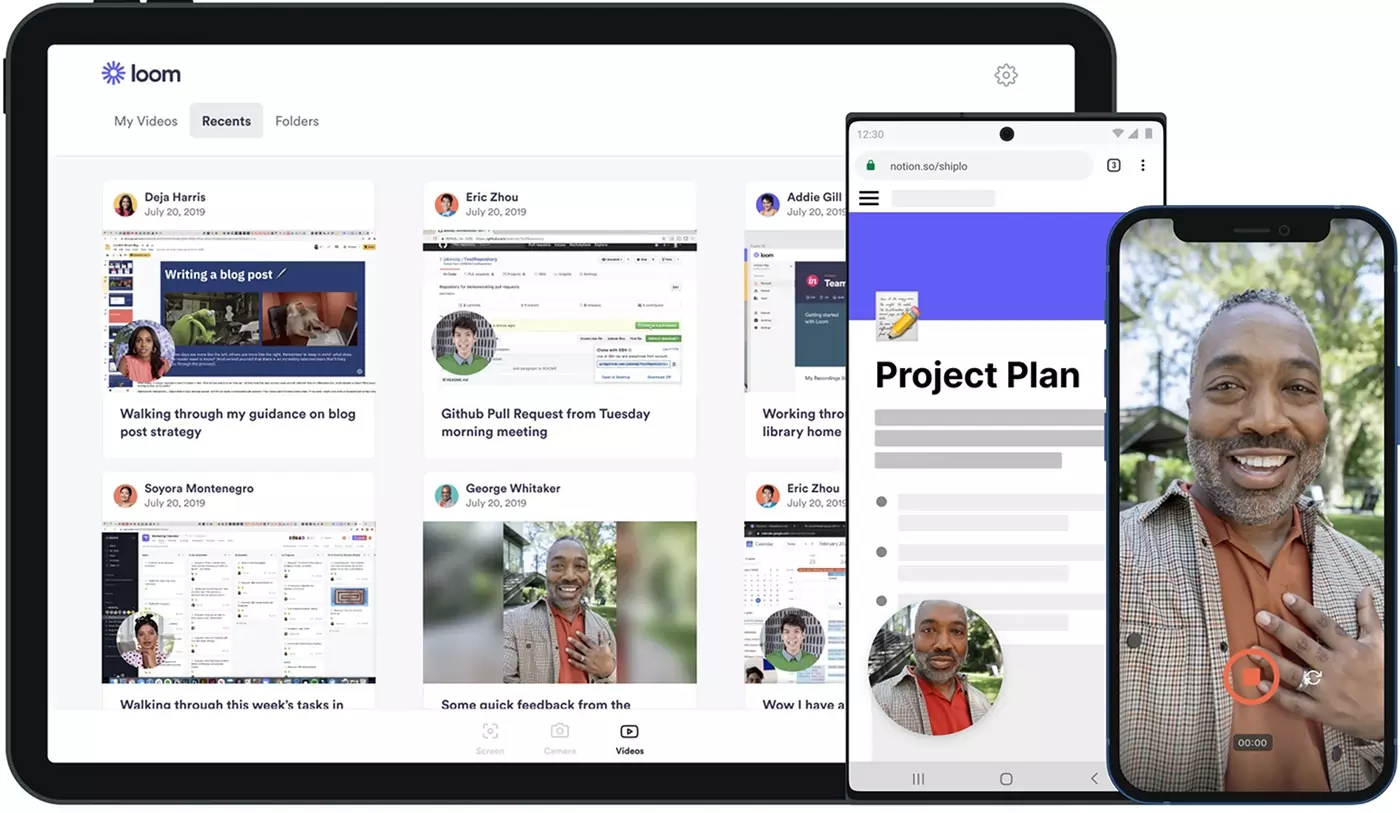
This way, you can easily spark discussions and clarify questions without the need for lengthy emails.
Overall, Loom is ideal for Agile teams that need to communicate asynchronously.
Limitations
- Limited editing and annotation tools
- Can be slow to upload and download large video files
5. Snagit
Snagit stands out from similar software tools for its robust feature set dedicated to capturing and editing screenshots.
You can capture any specific parts of the screen, including rectangular captures, window captures, and full-screen captures. It also lets you add annotations, highlights, and watermarks to these screenshots.
Limitations
- Very basic video recording and editing capabilities
- Lacks advanced features like webcam recording and interactive videos
C. For Collaborative Designing
6. Figma
With this cloud-based design tool, you can make interactive prototypes, design parts, and libraries; then, store your work on the cloud, and share them with collaborators.
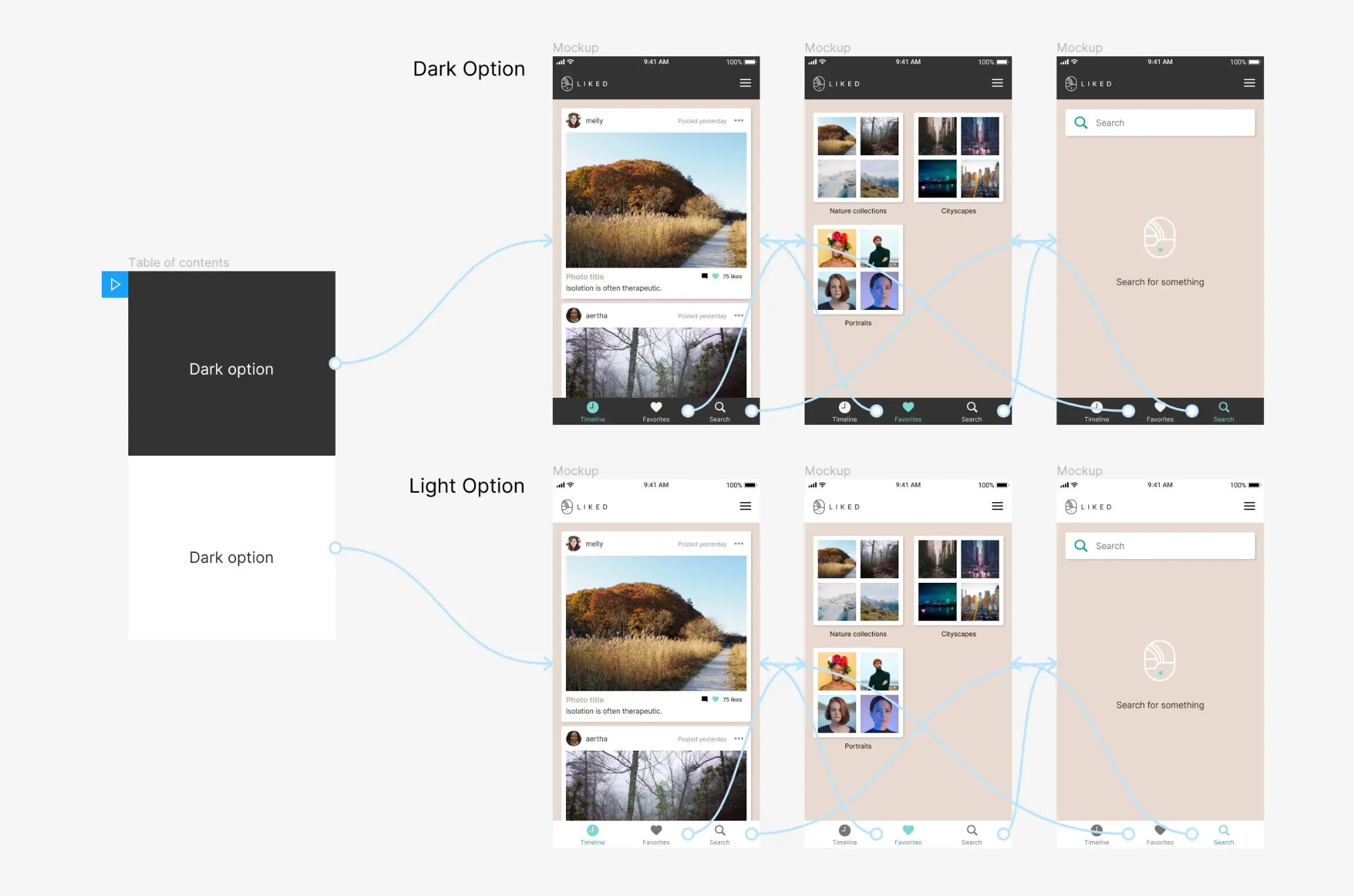
What makes Figma special is its collaboration features. Many designers can work on the same design at the same time, and collaborators can leave comments on the design, keeping everyone on the same page.
Limitations
- Not ideal for complex design workflows
- Limited customizability
III. It’s time to pick your best Agile collaboration tools
It’s your turn now!
Remember to determine your project goals, team size, workflow, and budget before making your decisions.
With the right Agile tools, you can elevate your team’s collaboration and productivity.
If you’re looking for a quick recommendation, our pick is Upbase.
Choosing Upbase isn’t just a decision; it’s an investment in your team’s success.
This project management tool strikes a rare balance between power, simplicity, and affordability. It streamlines Agile project management, turning collaboration into a joy and ensuring your team effortlessly stays on the same page.
As you navigate the dynamic landscape of project management, consider Upbase—your trusted companion in the pursuit of Agile excellence.
Sign up for a free Upbase account now.
IV. FAQs
1. How to choose the best Agile tools?
Finding the best Agile tools can be a challenge. Although many teams operate under the agile methodology, no two Agile teams are the same.
The most important factors to consider include the team size, workflow, project requirements, budget, and the team’s agile adoption level.
2. What are the collaboration practices in Agile?
Here are some key collaboration methods in Agile:
- Visualizing work
- Daily stand-up meetings
- Sprint planning meetings
- Open communication channels
- Cross-functional teams
- …
These collaboration methods can be used in different Agile frameworks, such as Kanban and Scrum methodologies.
3. What are the advantages of Agile methodologies?
Agile methodologies help improve team communication and collaboration, adaptability, and deliver value to the customer through frequent and incremental iterations. This allows Agile teams to learn and optimize their processes over time.
4. What tools can be used for Agile management?
Great Agile tools include:
- Upbase, an all-in-one solution for project planning, team collaboration, instant messaging, etc.
- Jira, for progress tracking.
- Trello, for Kanban-style project visualization and task management.
- Google Meet or Zoom, for video conferencing and screen sharing.
These tools facilitate project management, team communication and collaboration, and transparency within Agile teams.
